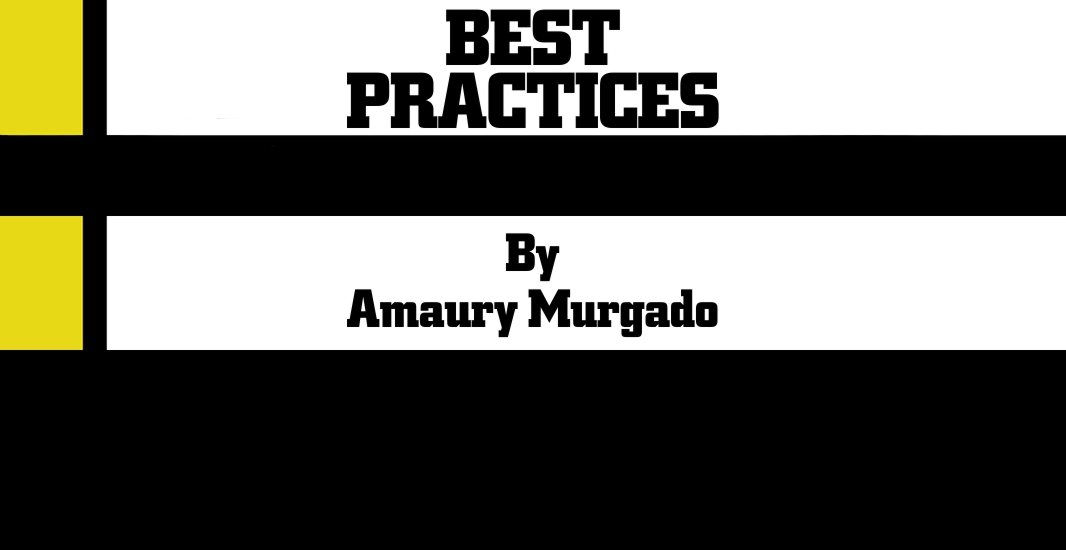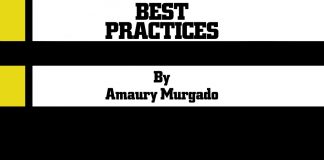This Best Practices article discusses the importance of investing in your first 10 minutes in order to maximize initial response.
Borrowing a line from the movie “The Emperor’s Club,” “The end depends on the beginning.” There can be no truer statement made when speaking about a critical incident.
The first 10 minutes sets the tone for the successful, or if not handled properly, the not-so-successful resolution of the incident. Three steps will help us maximize initial response. The first step is found in understanding that your initial decisions are more important to your outcome than decisions made later. Second is knowing that setting up a standardized response will save time and effort. And third, that as a supervisor, you must learn to let go and delegate certain tasks to assist you in the handling of your call.
A Set of Primary Assumptions
Even before we start our response, we already know several seemingly simple yet important pieces of information. We know that all critical incidents have a beginning, a middle and an end. This fact helps us to learn to plan in stages. We also know that there will always be factors out of our control that will force us to make certain decisions. This serves to make some of our decision making somewhat simpler because they basically make themselves.
Further, we know that though time is generally on our side, the longer it takes for us to get organized into a cohesive response, the stronger the chances are of the incident expanding and becoming harder to deal with.
Last, as first responders, we have to live with the fact that we will have to respond with whatever units are available and on hand. We know that certain agency resources like a SWAT team, any specialty units, auxiliary units, or other call-out type personnel, are probably a good hour away before they can be deployed. We also accept that any law enforcement resources that come from outside the agency will probably take even longer. At first glance, these assumptions may seem almost counter-intuitive. Most supervisors probably face this reality on a daily basis, which makes them desensitized to them. That in turn makes them numb to their significance of how they can help or hurt them when making decisions.
It may be true that you go to war with the army you have and not the one you wish you had, but we need to shake off the numbness and use this information to create a base from which to build. We need to make an investment in the outcome from the beginning and concentrate on our initial response.
Early Decisions
You must understand that your earlier decisions are the most important ones. The reason your first 10 minutes are so important becomes clearer when we look at how certain aspects of decision making help us to define our response. As decision makers, we can benefit from becoming familiar with the principles of positive feedback and path dependence. These principles are found in a research method called process-tracing.
One of our earlier assumptions states that every critical incident has a beginning, a middle and an end. Process-tracing concentrates on the beginning and middle to help explain the end. When you look into process-tracing, you will eventually be led to consider the importance of an illustration by way of what mathematicians call the Polya’s Urn Process. It’s a simple experiment with long reaching significance for decision makers.
Imagine a very large urn containing two colored balls, one red and one black. You remove one ball and then return it to the urn with an additional ball of the same color. You repeat this process until the urn is filled. What you put into the urn is based solely on the rule you use when you pull out the next colored ball. In theory, the experiment could produce an urn filled with almost all red balls and few black ones, one filled with almost no red balls and mostly black ones, or every possible combination in between.
The Polya’s urn process exhibits what is called positive feedback. This means that each step along a particular path produces a consequence that sets up the path for the next step. This in turn sets up a powerful cycle of self-reinforcing activity. This self-reinforcing activity then creates path dependence.
In other words, earlier decisions matter much more than later ones. These early decisions set you down a path as you build upon each former decision while making new ones. This path creates a direction and commits you into taking a certain line of action that in turn negates others. The premise that your initial decisions are the most important can be illustrated further with two simple examples.
Perimeter
The first involves setting up a perimeter to contain a suspect. Conventional wisdom dictates that when making a perimeter during an in-progress call, you make the perimeter larger rather than smaller. The reason behind this is to maximize your chances of keeping the suspect within your containment area. If you make this area too small, your suspect may already be outside your perimeter or, equally worse, can easily slip out.
For this particular example, and for whatever reason, we will suppose that the supervisor handling the call has decided to forgo conventional wisdom and make a smaller perimeter. The area they cover then becomes much more localized as they decide to focus on the most probable locations the suspect may be hiding in. The decision to go smaller versus larger creates the basis for subsequent decisions that in turn limits the resources you commit to your response. The supervisor then creates his own path dependence as every decision he makes from that point on is based on his initial response to make a smaller perimeter.
The second example is probably one that most supervisors have already experienced at one time or another. It involves a form of tunnel vision where your responding units forget about their bigger set of response responsibilities and strictly focus on apprehending the suspect.
In this example, responding units start to look for a suspect vehicle involved in an armed robbery. A description of the vehicle has already been broadcast over the radio and everyone goes searching for the vehicle. As units start to flood the area and conduct traffic stops on likely candidates, the supervisor realizes that no one has gone to meet with the victim to confirm the crime and get updated information.
When a unit finally arrives at the scene, interviews the victim, and broadcasts new information, it turns out the vehicle description was incorrect. Responded units have wasted valuable time looking for the wrong vehicle.
At this point, we all know that chances are very good that responding units have driven right past the suspect in their haste to apprehend him. The initial decision by the first couple responding officers to focus on looking for the fleeing suspect instead of ensuring that someone met with the victim set in motion an initial chain of events that caused the very opposite of that which they were trying to achieve.
These simple examples draw your attention to the importance of your first set of decisions. These decisions usually occur within the first 10 minutes of your response. Then the question is how to maximize the initial decision making and increase the chances of success. Since we are already trained in our agency’s standard operating procedures, policies, and can draw from past experience, we make that our starting point. The binding principle here becomes to work smarter not harder.
Standardized Response
Obviously, no two agencies are the same, but they share similar characteristics. The same can be said of most in-progress calls. Because this is true, we can incorporate some basic response elements that apply to most, if not all, in-progress situations. We also need to make sure that everyone is familiar with these elements and knows how use them accordingly. This involves setting up a standardized response that covers as many essential elements that you would need at the beginning part of the incident.
For example, as the call goes out, the two closest responding units can have specific assignments. The first unit goes to the victim / complainant and confirms that there was in fact a crime and that the victim desires prosecution. The unit then confirms or updates any information for re-broadcast. The second unit is then free to start setting up the perimeter and directing other responding units where to deploy
A second element that can be incorporated is a simple numbering system that can be used to identify the sides of a building for responding units. Whatever the officer deems to be the front of the building, it is labeled as “side one.” Going in a counterclockwise direction, each of the remaining three sides gets the number two through four. This eliminates the need for compass-type headings like “southeast corner” which quickly become confusing.
Calling out “I have side three,” gives an exact picture for everyone to see and makes it easier for a supervisor to track their unit locations. Calling out a specific corner becomes easier as well
because it is just a matter of combining two sides. “I have corner three-four,” immediately lets everyone know that officer is in the back right-hand corner of the building.
If you have an area with many buildings, you just identify the building with a number and break it down the same way. One location could be, “I have side one, building one.” In a larger perimeter you would still use the old-fashioned method of calling out your location by street or landmark. Obviously if you have an inner and outer perimeter, you could use a combination of both.
In theory, the supervisor now has an officer at the scene, a perimeter is being set up, and perimeter locations are easily identified. With this in place, the supervisor can focus on other issues like calling for aviation or K9 if they are available.
Delegating Certain Tasks
When possible, the supervisor should look for opportunities to delegate tasks. This saves the supervisor time and allows for him to look at the bigger picture. This includes finding a command post. It could be as easy the back of his car when he first arrives. It can be that the supervisor is still too far away and asks a subordinate to designate one. This is usually handled by the person setting up the perimeter as he is already working with the containment area.
The supervisor also starts thinking in terms of finding staging areas for additional resources. Again, it can be as simple as meeting with the supervisor at his unit for further instructions or having some else help identify the most practical location such as a huge parking lot.
A technique that some supervisors forget to employ is the use of a scribe. This involves delegating someone to take notes on the actions taken during the event. The scribe is used if the call is going to become more involved or the supervisor feels the call may drag out. The designated scribe will help document the incident by keeping track of the call’s progress.
For example, the scribe documents perimeter locations or what resources have been called into play. This frees the supervisor to concentrate on decision making instead of note taking. It will also free the supervisor to handle the obvious flow of phone calls or radio traffic he will receive or need to make as he formulates his next move.
The scribe will also prove to be invaluable when it is time to document the incident. This is especially true of incidents that might require the use of the Incident Command System or otherwise complex calls that prove to be long in duration.
Delegating other considerations such as establishing a media staging area and an EMS staging area saves time, as well. Breaking down your response into manageable tasks that can be delegated will help the supervisor make the most of his first 10 minutes. If the supervisor fails in his initial organization, he will spend most of his time playing catch-up or worse, he will miss something as he tries to do six things at once.
Responding units and your chain of command will be clamoring for these very things, which will only serve to slow you down while you try and make other decisions. Not having a staging area for the media when the onslaught of reporters and their news vans come increases the chance that they will be at the wrong place at the wrong time. It also gives the wrong impression of your preparedness and will not look good during the six o’clock news.
Final Words
At this point, some might be wondering why we have centered on so many obvious things. Some might even say we have only accomplished a review what you already know. Unfortunately, knowing and doing are two different things. Think back to some of the incidents that you have handled recently. Perhaps a bank alarm, an armed robbery, or maybe a person making threats to commit suicide.
Were these situations handled correctly? Were you satisfied with your response? Did you use your time wisely? Were you able to build upon your initial decisions or were you having to play catch-up by doing things that could have already been done? Or worse, did your initial decisions lead you down the wrong path?
In this day and age of ever-shrinking budgets, being fiscally responsible equates to having a resource available when you need it. Tying up resources that you do not need means spending money you do not have. Make sure you spend your first 10 minutes wisely, maximize initial response, by understanding that your initial decisions are the most important, that you need to set up a standardized response, and that you should delegate certain tasks. This may just be one of the best investments you ever make.
Originally Printed in Law and Order Magazine, May 2009




